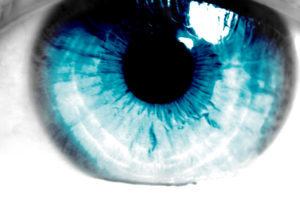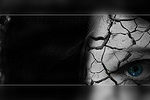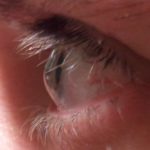What is OrthoKeratology

OrthoKeratology is an FDA approved procedure that improves a person’s vision without surgery, glasses, or daily contact lenses. Many patients refer to it as “braces for your eyes”. Summer provides a great opportunity to start an orthokeratology program for your child. Imagine enjoying sports like swimming, gymnastics, and dance without the use of contact lenses or glasses. The nearsighted prevention benefits provide a tremendous added bonus to a summer orthokeratology program.
OrthoKeratology Prevents the Progression of Nearsightedness
It’s great being able to enjoy life and sports in general without contact lenses or glasses; however, a significant benefit of orthokeratology is that it has been clinically proven to slow the progression of nearsightedness in children. Numerous studies have shown the rate of myopia reduction is between 50% to 90%. A landmark study on the rate of myopia in the US was completed in 1972. This study found that 25% of the US population was myopic (nearsighted). A follow up study completed 41 years later found the rate of myopia in the United States had increased to 41% of the population. Complete analysis of these two studies can be found here in this earlier TheEyeDocBlog.com entry. High myopia increases a person’s risk for many conditions such as glaucoma and retinal detachment. By decreasing a child’s amount of nearsightedness we are decreasing their risk for these, and many other, conditions.
FDA Approved Technology
Overnight orthokeratology was approved by the FDA in 2002. This was game changer for orthokeratologists. Prior to overnight orthokeratology’s FDA approval, patients would wear their retainers every other day, which was not ideal. Now patients wear their lenses at night, removing them upon waking and enjoy good vision all day, every day. We are often asked if the vision correction lasts more than one day and yes it does. If a patient forgets to wear their lenses one night their vision is still good the next day. Skipping a day of wearing your vision retainers may not result in a second day of 20/20 vision, more likely 20/25 or 20/30; however, very good, functional vision is still maintained. It takes days and most often weeks for the vision to return to the pre-treatment level.
What Do Patients Say?
The first thing we hear from patients after they have undergone OrthoK is that they can’t believe it works. “My daughter put her lenses in when she went to bed, she took them out when she woke up and says she can see fine” is a common theme. Another common topic is “why haven’t I heard about this before” and there are many reasons for this.
Why Haven’t You Heard About OrthoKeratology or Gentle Vision Shaping Before?
Quite simply, there are well under 1000 active orthokeratologists in the United States. With orthokeratology experience matters and there is a significant learning curve in becoming an orthokeratologist. New optometrists and ophthalmologists receive very limited orthokeratology training in school. Dr. Richard Driscoll has been an active orthokeratologist since 1999, helping countless patients achieve good vision without the use of daily contact lenses, surgery, or glasses.
How Does Orthokeratology Work?
Adult patients, kids, and parents alike express amazement at how we can alter or mold the shape of their corneas with a contact lens, resulting in clear vision during the day without the need for glasses. It’s not magic, the science is very well established and FDA approved. We remold the cornea into a shape similar to what is done with LASIK. The difference is that Ortho-K achieves this without the use of a laser and it does not remove any tissue; therefore, it is reversible, and easily modifiable.
Who is a Good Candidate for Orthokeratology?
Here is a quick list of those patients that benefit from orthokeratology. A more complete list of what makes a good orthokeratology candidate can be found on the OrthoKDoctor.com Website.
- The moderately nearsighted
- Children
- Adults
- Children that have experienced a sharp increase in nearsightedness
- Patients afraid to have elective surgery on their eyes
- Athletes
- Patients denied refractive surgery due to occupation
- People with a fear of surgery
What are the Benefits of OrthoKeratology?
- Safely improves your vision, usually to 20/20
- FDA approved for children and adults in 2002
- Greatly slows the progression of nearsightedness in children (up to 90%)
- Safer than refractive surgery
- It’s reversible
- Works while you sleep
- Great solution for patients with dry eyes
- Good for patients that can’t wear traditional daily contact lenses
- Allows you to see clearly all day – some patients experience more than 1 day of clear vision after 1 night of wear
- Proven technology
How do I Find More Information?
Check out the video below and see what patients are saying about Orthokeratology at Total Eye Care. If you want to know more about Orthokeratology and the Gentle Vision Shaping System at Total Eye Care call our Colleyville office for a free consultation 817.416.0333, Schedule a free OrthoK Consult online or visit www.OrthoKDoctor.com

 We often hear from eyeglass wearers “oh, I tried to wear contacts but they irritated my eyes”. The most common reason patients discontinue contact lens wear is because of poor comfort. Significant advances in contact lens materials have improved contact
We often hear from eyeglass wearers “oh, I tried to wear contacts but they irritated my eyes”. The most common reason patients discontinue contact lens wear is because of poor comfort. Significant advances in contact lens materials have improved contact Pink eye is a descriptive term indicating that the eye is inflamed for some reason. Not all pink eyes are infected or contagious. “Pink” eye is usually caused by a virus (often quite contagious), allergies, or bacteria. The most common cause of pink eye is a viral infection or allergies. Patients with pink eye should not wear contact lenses. Read more…..
Pink eye is a descriptive term indicating that the eye is inflamed for some reason. Not all pink eyes are infected or contagious. “Pink” eye is usually caused by a virus (often quite contagious), allergies, or bacteria. The most common cause of pink eye is a viral infection or allergies. Patients with pink eye should not wear contact lenses. Read more….. Scleral lenses have been around for over 100 years. Until the new gas permeable lens materials were developed patients could only wear scleral lenses for a few hours a day. With the highly oxygen permeable lens materials now in use, patients can comfortably wear these lenses all day. Scleral contacts are most commonly used to treat eyes with irregular corneas such as keratoconus and post-surgical eyes (usually following corneal transplant surgery or related to complications from refractive surgery). Another common use for scleral contact lenses is in the special effects industry where they are used to protect the cornea and/or to give the eye an exotic appearance.
Scleral lenses have been around for over 100 years. Until the new gas permeable lens materials were developed patients could only wear scleral lenses for a few hours a day. With the highly oxygen permeable lens materials now in use, patients can comfortably wear these lenses all day. Scleral contacts are most commonly used to treat eyes with irregular corneas such as keratoconus and post-surgical eyes (usually following corneal transplant surgery or related to complications from refractive surgery). Another common use for scleral contact lenses is in the special effects industry where they are used to protect the cornea and/or to give the eye an exotic appearance.
 When I was looking for an office productivity suite I first checked out the Apple products, Keynote, Pages and Numbers, however I wanted better Microsoft Office compatibility and settled on Quick Office Pro HD. It allows for basic formatting of Word, Powerpoint and Excel documents and overall works pretty well. It is clearly not a replacement for MS Office, but it takes care of most of your needs when advanced formatting is not required. What I do like best about it is that it integrates well with numerous cloud storage providers such as Google Drive, SugarSync, DropBox, and Evernote. Quick Office Pro HD is $14.99.
When I was looking for an office productivity suite I first checked out the Apple products, Keynote, Pages and Numbers, however I wanted better Microsoft Office compatibility and settled on Quick Office Pro HD. It allows for basic formatting of Word, Powerpoint and Excel documents and overall works pretty well. It is clearly not a replacement for MS Office, but it takes care of most of your needs when advanced formatting is not required. What I do like best about it is that it integrates well with numerous cloud storage providers such as Google Drive, SugarSync, DropBox, and Evernote. Quick Office Pro HD is $14.99. LastPass is a password management tool and consequently a very important app for me. I use it multiple times a day and can not recommend it highly enough. When you set up your account, LastPass encrypts your passwords on your PC, and uploads the encrypted passwords to their servers, giving you an encrypted offsite back up of this critical information. You can then opt to only store encrypted passwords on your PC, further enhancing your passwords security. I usually use the desktop version which smoothly incorporates password management into your internet browser. The LastPass iPad app gives you access to all of your passwords via its own internet browser. LastPass uses its own browser since iPad’s Safari browser does not allow plugins or app integration. LastPass works very well and provides a safe, secure way to store passwords and other confidential information. LastPass offers free and paid options.
LastPass is a password management tool and consequently a very important app for me. I use it multiple times a day and can not recommend it highly enough. When you set up your account, LastPass encrypts your passwords on your PC, and uploads the encrypted passwords to their servers, giving you an encrypted offsite back up of this critical information. You can then opt to only store encrypted passwords on your PC, further enhancing your passwords security. I usually use the desktop version which smoothly incorporates password management into your internet browser. The LastPass iPad app gives you access to all of your passwords via its own internet browser. LastPass uses its own browser since iPad’s Safari browser does not allow plugins or app integration. LastPass works very well and provides a safe, secure way to store passwords and other confidential information. LastPass offers free and paid options. Do you want to learn about a particular subject? iTunes U has hundreds, possibly thousands, of free courses available on nearly every topic you could want. There are college level courses offered by major universities in addition to K-12 classes. There is also a section where private or non-profit organizations offer courses. The courses are very well done with class notes, audio and video material. iTunes U is an incredible resources. You can download the complete courses to your iPad for later use or pull them off the internet as needed. The iTunes U app and access to the library of classes is free.
Do you want to learn about a particular subject? iTunes U has hundreds, possibly thousands, of free courses available on nearly every topic you could want. There are college level courses offered by major universities in addition to K-12 classes. There is also a section where private or non-profit organizations offer courses. The courses are very well done with class notes, audio and video material. iTunes U is an incredible resources. You can download the complete courses to your iPad for later use or pull them off the internet as needed. The iTunes U app and access to the library of classes is free.
 Your eye converts what you see into very low voltage electrical signals that travel along the optic nerve between your eye and the visual cortex. The computer inside the VEP compares the strength and speed of signal to a database of normal results and then the doctor uses that information to guide his or her diagnosis.
Your eye converts what you see into very low voltage electrical signals that travel along the optic nerve between your eye and the visual cortex. The computer inside the VEP compares the strength and speed of signal to a database of normal results and then the doctor uses that information to guide his or her diagnosis. Here is a mainstream media article in Gizmag talking about an upcoming meeting of the Optical Society where David Troilo, PhD, who is the Vice President and Dean for Academic Affairs from SUNY College of Optometry, will give a lecture on Optical Approaches for Controlling Myopia Progression: Evidence from Experimental Models.
Here is a mainstream media article in Gizmag talking about an upcoming meeting of the Optical Society where David Troilo, PhD, who is the Vice President and Dean for Academic Affairs from SUNY College of Optometry, will give a lecture on Optical Approaches for Controlling Myopia Progression: Evidence from Experimental Models. It’s easy, you can enter our contest in two steps.*
It’s easy, you can enter our contest in two steps.*
